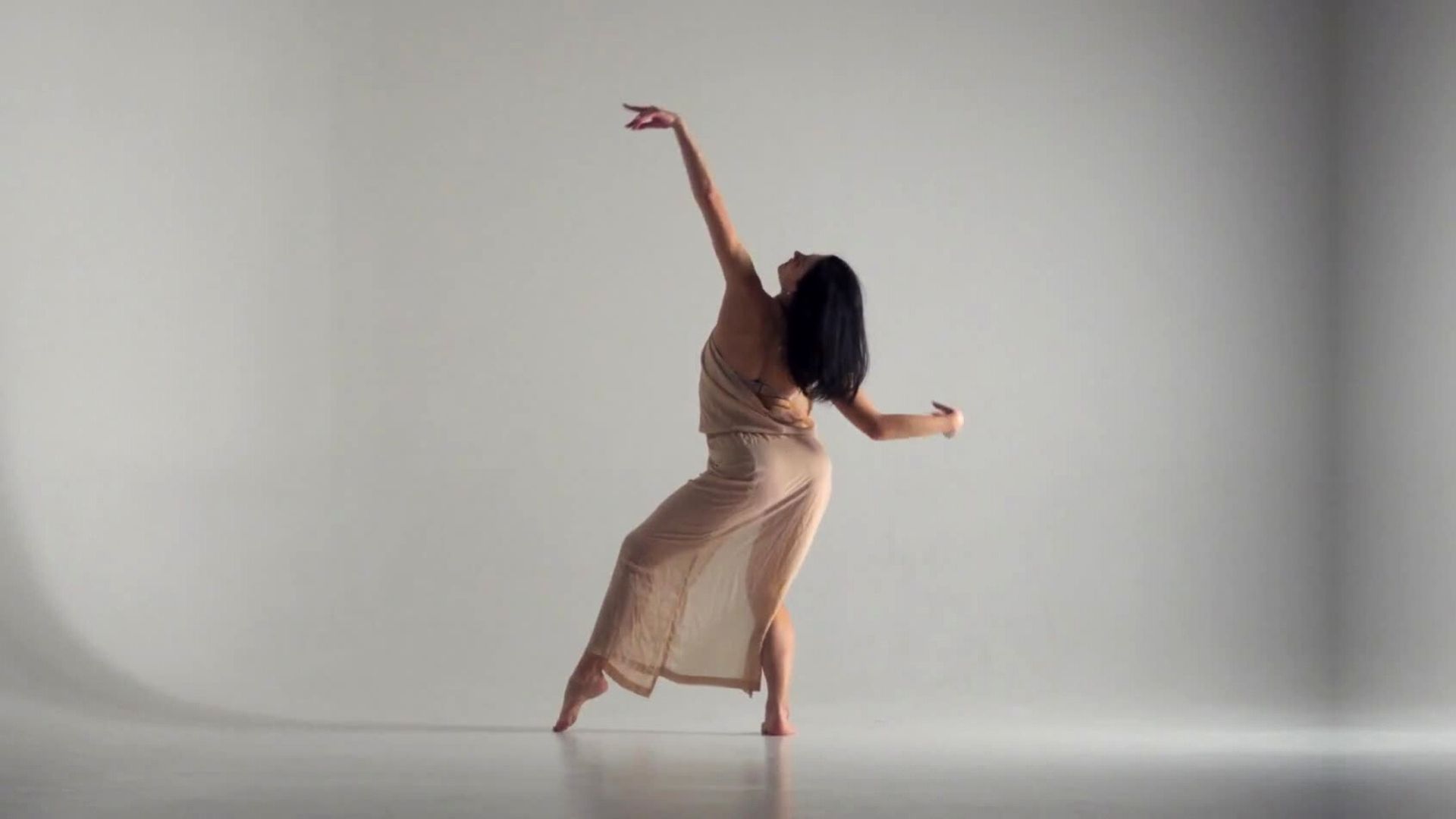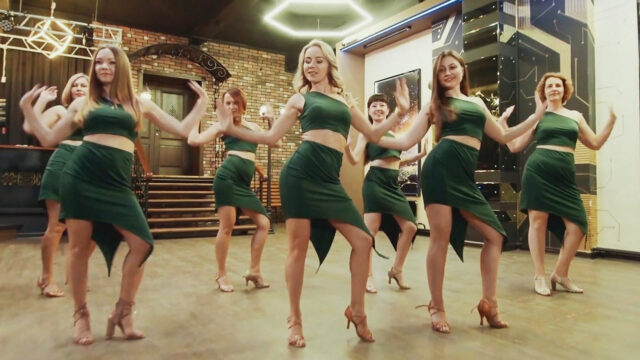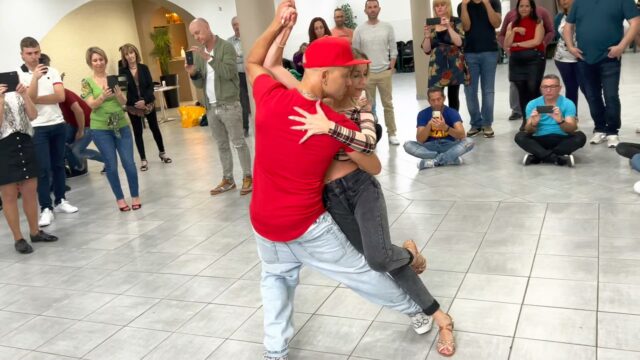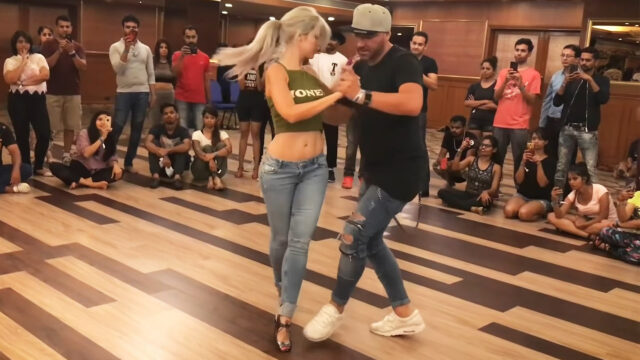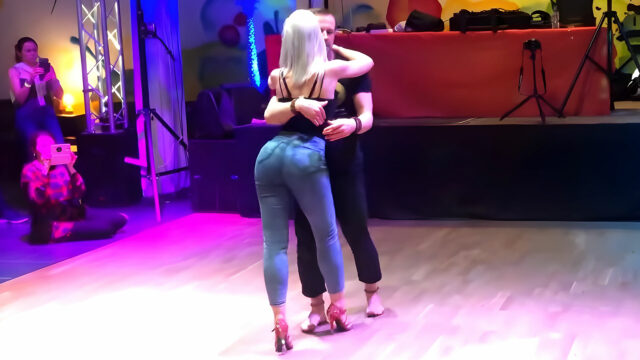Welcome to the exhilarating world of free-style dance, where improvisation takes center stage and unlocks endless possibilities for creativity and self-expression! From hip hop to street jazz, there’s a wide array of styles that fall under this category – but what they all share is an emphasis on freedom and adaptability.
In this blog post, we’ll explore the fascinating principles underlying free-style dance as well as its numerous benefits, including increased creativity, improved mental and physical health, and a major confidence boost.
Table of Contents
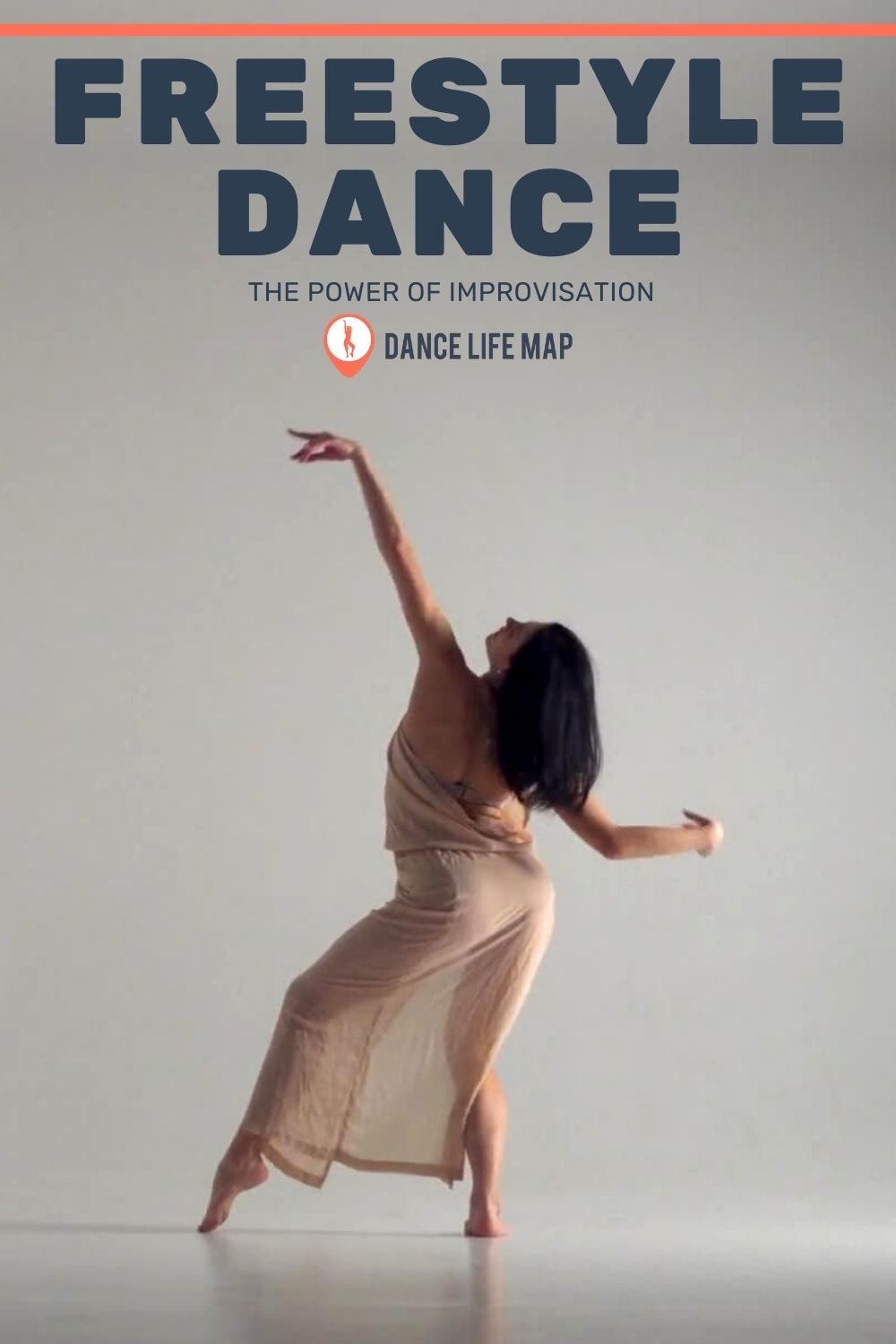
Understanding Freestyle Dance
Freestyle dance is an umbrella term describing a unique type of dance or rather movement that is primarily based on improvisation and self-expression, setting it apart from traditional choreographed performances.
Who Invented Freestyle Dance?
The origins of freestyle dancing can be traced back to the streets of New York City in the 1970s, where a vibrant culture of street dancing emerged in response to the city’s diverse and vibrant music scene.
One of the key pioneers of freestyle dancing was DJ Kool Herc, a Jamaican-born DJ who is widely credited with being the founder of hip hop music. Herc would play a mix of funk, soul, and disco records at block parties in the Bronx, and dancers would improvise dance moves that reflected the rhythms and beats of the music.
As hip hop music gained popularity in the 1980s, so too did freestyle dancing. Breakdancing, a style that combines acrobatic moves with intricate footwork and body isolations, emerged as one of the most popular dance forms. Breakdancers, also known as B-boys and B-girls, would battle each other in competitions, showcasing their freestyle dancing skills and creativity. This is what our modern day hip hop dance battles are known for.
In addition to breakdancing, other forms of freestyle dancing began to emerge during this time. Locking, a street dance style that involves a series of rhythmic movements and pauses, was developed by Don Campbell in the 1970s, while popping, a style that emphasizes rapid, jerky movements, was popularized by dancers like Boogaloo Sam.
Freestyle dance moves became increasingly diverse and incorporated elements from a wide range of dance styles, including jazz, funk, and African dance. Today, it’s a global phenomenon, with dancers around the world showcasing their skills and creativity in competitions, performances, and online.
In recent years, most dance styles evolving from freestyle dancing have become an important part of pop culture, with movies like Step Up and TV shows like So You Think You Can Dance bringing the art form to a wider audience. Freestyle dancing continues to innovate, with dancers constantly pushing the boundaries of what is possible and creating new dance forms again and again.
Principles Of Improvisation And Self-expression In Dance
The core principles of improvisation in dance focus on spontaneity, intuition, and authentic self-expression. Dancers who embrace these ideals allow themselves to be guided by the music and their inner feelings, rather than adhering strictly to predefined choreography.
Incorporating self-expression into freestyle dance is essential for cultivating one’s individual style. For instance, a dancer may feel inspired by a particular song or rhythm that evokes personal memories, experiences, or emotions. By drawing upon these influences during an improvised performance, dancers can create original moves that set them apart from others on the dance floor.
Differences Between Freestyle and Choreographed Dance
Free-style dance and choreographed dance are two distinct approaches to the art of movement, with each offering unique qualities that cater to different preferences and skills.
A primary difference lies in their structure: freestyle dancing is defined by its improvisational nature, where dancers spontaneously create moves and express themselves without any predetermined steps or patterns. This approach allows for boundless creativity as dancers can experiment with various combinations of movements, responding instinctively to the music’s rhythm and tempo.
On the other hand, choreographed dance relies on pre-planned sequences that are meticulously arranged by a choreographer or dancer themselves before executing them on stage or during practice sessions. These routines often require precise synchronization between multiple dancers or even entire ensembles. The attention to detail in choreography makes it possible for stunning visual displays featuring expertly timed transitions between poses and complicated formations like those seen in ballet performances.
Another difference between the two styles is that freestyle dance often places more emphasis on individual expression and creativity, while choreographed dance places more emphasis on the technical execution of a set routine.
Overall, both styles of dance have their unique merits and offer dancers different opportunities for self-expression and artistic growth.
Benefits of Freestyle Dance and Improvisation
Experience physical and emotional release, increase creativity and self-expression, improve mental and physical health, and build self-confidence through the power of free-style dance and improvisation.
Physical and Emotional Release
Free-style dance and improvisation offer incredible avenues for both physical and emotional release. As dancers move their bodies to the rhythm of the music, they can simultaneously let go of tension, stress, and negative emotions that may have accumulated during the day.
One example of this emotional release is evident in improv-based dance therapy sessions. Participants are encouraged to tap into their feelings while exploring various movement patterns, resulting in a powerful connection between body and mind. This fusion allows them to confront unresolved emotions or traumatic experiences – an invaluable facet of the healing process.
Increased Creativity and Self-Expression
Improvisation during dancing can unlock new levels of creativity and self-expression. By allowing oneself to move freely without relying on predetermined choreography, dancers are free to explore their bodies and movement styles in ways that feel authentic to them. This unique form of expression allows for personal style and individuality to shine through, making each performance truly one-of-a-kind.
Freestyle dancing also provides an avenue for emotional release and catharsis. Dancers can use improvised movements as a way to express themselves when words fail them. This type of creative outlet is invaluable not only in personal growth but also as an art form that resonates with audiences looking for originality and authenticity from performers.
Improved Mental and Physical Health
Freestyle dance and improvisation offer a myriad of benefits to one’s mental and physical health. When dancing, endorphins are released, which can promote feelings of happiness and joy while decreasing stress levels.
Physical health is also improved when practicing freestyle dance, as it provides an excellent form of exercise that can be done anywhere at any time. Dancing regularly can lead to increased cardiovascular endurance and muscle strength while improving flexibility and balance. Moreover, it promotes good posture by strengthening core muscles in the back and abdomen.
Overall, incorporating freestyle dance into your routine not only presents an enjoyable outlet for artistic expression but also has numerous benefits for both mind and body.
Building Self-confidence
Freestyle dance and improvisation are fantastic ways to build self-confidence. When you let go of preconceived notions of what “proper” dance should look like, you open up a world of creative expression that can be incredibly empowering.
Freestyle dancers use their bodies as instruments to communicate raw emotion, rather than following a set routine or choreography. This encourages personal growth and fosters the development of authentic movement styles.
Moreover, the social aspect of freestyle dancing provides opportunities for individuals to connect with others who share similar interests, creating a sense of community around something they love.
Techniques for Improvisation In Freestyle Dancing
To improve improvisation in free-style dance, one can actively listen to music, experiment with movements, trust instinct and intuition, incorporate props and partners, and move from the inside out.
How to Freestyle Dance
To get started, it’s important to first find the right mindset. Take a mental note to let go of any self-consciousness or fear of judgment, and simply focus on enjoying the music and the freedom of movement (we’ll talk more about it later in the article). Once you’re in the right mindset, start moving. Always begin with simple steps, simple moves and then grow from there.
As you begin to feel more comfortable, try experimenting with different freestyle moves you see on TV. One such classic freestyle dance move can be the arm wave, where you move your arms in a wave-like motion. Incorporate head movements, spins, and footwork into your improvisation. When dancing, keep in mind that the upper body plays a significant role, so pay attention to your posture and engage your core muscles.
Another helpful tip is to watch other dancers and draw inspiration from their moves. While it’s important to find your own freestyle way of dancing, observing others can help you learn new techniques and approaches. If you’re unsure about how to execute a particular dance move, try watching videos online or attending dance classes with a qualified instructor who can guide you step by step.
Most importantly, have fun with it! Freestyling is a truly unique dance experience and there is no right or wrong way of going about it. Whether you’re dancing alone or with a group of friends, don’t be afraid to let loose and show off your moves.
Active Listening To Music
Active listening to music is an essential aspect of freestyle dance and improvisation. By paying close attention to the rhythm, melody, and lyrics of a song, dancers can incorporate these elements into their movements and express themselves more effectively. Active listening also allows dancers to pick out specific moments in a song where they can experiment with different techniques or styles.
Additionally, active listening helps dancers stay present in the moment and respond spontaneously to the music. Rather than planning out every move beforehand, dancers who actively listen can let go of any preconceptions and allow their bodies to move intuitively.
Trusting Instinct and Intuition
One key aspect of free-style dance is trusting your instincts and intuition. Rather than following strict choreography, freestyle dancers allow their bodies to move in response to the music and their own inner impulses.
Trusting one’s instincts and intuition in dance can lead to some truly unique movements and performances. Dancers who are able to tap into this sense of flow, often report feeling more connected to themselves, their bodies, and the world around them as they explore new ways of moving.
Incorporating Props and Partners
Incorporating props and partners can add a new dimension to freestyle dance improvisation. Props such as scarves, hats, or even chairs can be used to inspire movement and creativity.
For example, holding a scarf in one hand while dancing can create delicate and flowing movements that enhance the overall performance. Additionally, incorporating partner work into freestyle dance allows for collaboration and communication between dancers.
This could involve mirroring each other’s movements or creating a unique choreography together on the spot. Alwin Nikolais was known for using props extensively in his performances, wrapping dancers in stretch fabric to create unique effects that added depth to his choreography.
Moving From The Inside Out
Moving from the inside out is a key aspect of free-style dance improvisation. It involves connecting with your inner feelings and emotions before expressing them through your movements.
This technique allows you to tap into your true self and communicate in an authentic way that can be felt by others watching you dance. This approach also helps build confidence as it encourages dancers to trust their instincts and intuition while letting go of any preconceived notions about how they should move.
It takes practice to get comfortable with this type of movement, but once mastered, it can lead to an incredibly powerful and liberating experience on the dance floor.
Overcoming Fear and Self-Doubt on the Dance floor
To overcome fear and self-doubt in free-style dance, it is essential to challenge limiting beliefs, embrace individuality, encourage experimentation and risk-taking, practice self-compassion and care, and seek guidance if needed.
Challenging Limiting Beliefs
One of the biggest hurdles in freestyle dance is overcoming fear and self-doubt. Many people feel constrained by their beliefs about what they can or cannot do on the dance floor, leading to a lack of creativity and confidence. Letting go of limiting beliefs is the key to achieving success in the freestyle dance field.
By exploring new movements and techniques in freestyle dance, individuals are encouraged to take risks and push beyond their perceived limitations. Moving away from familiar patterns creates room for growth, both physically and mentally.
This process of breaking down barriers not only unlocks creative potential but also builds self-confidence that extends beyond the dance floor.
Embracing Individuality and Uniqueness
One of the most significant aspects of free-style dance is the encouragement to embrace individuality and uniqueness. Unlike choreographed dance, freestyling allows dancers to express themselves in their authentic way, free from constraints or predetermined movements. This aspect promotes creativity and self-expression while providing an excellent opportunity for personal growth.
Freestyle dancing offers freedom that allows every dancer to create a unique persona on the dance floor that distinguishes them from others, giving them a chance to showcase their true selves without any limitations.
Encouraging Experimentation and Taking Risks
Encouraging experimentation and taking risks is essential in free-style dance. It allows you to explore new movements, challenge yourself creatively, and discover your unique style of expression. Don’t be afraid to try out different techniques or incorporate props into your performance.
Taking risks can also mean letting go of self-doubt and stepping outside of your comfort zone. Remember that making mistakes is part of the learning process and can lead to great discoveries in your dance practice.
By embracing experimentation, you are giving yourself the freedom to express yourself authentically while breaking away from traditional notions of choreography or structured movements.
Practicing Self-Compassion and Self-Care
Practicing self-compassion and self-care is an important aspect of freestyle dance, as it can help in overcoming fear and self-doubt. By being kinder to ourselves, we can let go of the pressure to perform perfectly or impress others with our dancing.
One way to practice self-care in dance is by paying attention to how our bodies feel during and after a dance session. If we’re feeling tired or sore, it’s important to take breaks when needed and avoid pushing ourselves too hard.
Additionally, incorporating mindfulness practices like deep breathing or visualization techniques can help calm any nerves or anxiety that may arise while improvising on the spot.
Seeking Support and Guidance
While free-style dance can be a liberating and empowering experience, it can also come with feelings of fear and self-doubt. Seeking support and guidance from others can be instrumental in overcoming these obstacles.
Research has shown that young adults who engage in dance activities have improved mental and emotional well-being compared to those who don’t participate in any form of physical activity.
Additionally, seeking guidance from experienced dancers or instructors allows for constructive feedback on technique and performance, leading to growth as an artist.
Conclusion
In conclusion, free-style dance and improvisation are powerful tools for personal growth and artistic expression. Through active listening to music, experimentation with movements, trusting intuition, and overcoming fear of self-doubt, dancers can tap into their creativity and build self-confidence.
Freestyle dancing offers a unique opportunity to release physical and emotional tension while improving mental health. It is an art form that values individuality and encourages risk-taking while allowing dancers to connect with themselves on a deeper level.
FAQs:
1. What is freestyle dance and how is it different from other dance concepts?
It refers to a type of dance where the movements are improvised on the spot, rather than following a set choreography. This allows for greater creativity and individual expression in each performance.
2. How can improvisation help improve my dance skills?
Improvisation can help dancers develop greater spatial awareness, timing, rhythm and confidence in their movement abilities. It also encourages experimentation with new styles and techniques, which can lead to breakthroughs in personal style and artistry.
3. Do I need any prior experience or training to participate in freestyle dance sessions?
No prior experience or formal training is necessary to participate in freestyle dance sessions – all you need is an open mind and willingness to explore your own movement potential through creative expression.
4. Are there any tips for getting started with freestyle dancing as a beginner?
Some helpful tips for beginners include starting with basic movements such as swaying, hopping or spinning before slowly building up more complex combinations; practicing regularly to build muscle memory; listening closely to the beat of the music; and experimenting with various tempos, genres or moods until finding one that resonates most strongly with your personal style.
If you enjoyed this article, feel free share it with your friends and let them know what you think about it. Also, consider checking out our most recent posts and stay in touch. Thank you!
